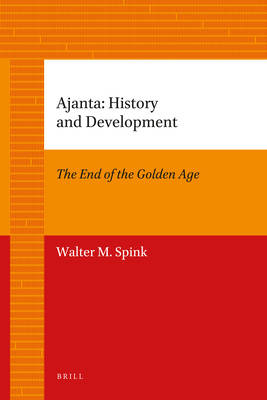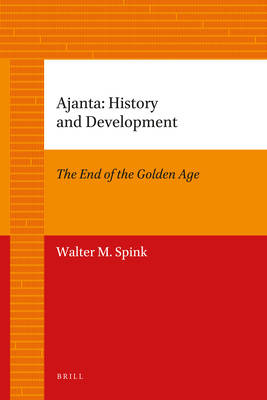
- Afhalen na 1 uur in een winkel met voorraad
- Gratis thuislevering in België vanaf € 30
- Ruim aanbod met 7 miljoen producten
- Afhalen na 1 uur in een winkel met voorraad
- Gratis thuislevering in België vanaf € 30
- Ruim aanbod met 7 miljoen producten
Zoeken
€ 80,95
+ 161 punten
Uitvoering
Omschrijving
The twenty-nine Buddhist caves near Ajanta form a devotional complex which ranks as one of the world's most startling achievements, created at the very apogee of India's Golden Age.
Ajanta: History and Development, appears as part of the series Handbook of Oriental Studies, present the reader with a systematic treatment of all aspects of the site, the result of forty years of painstaking research in situ by Walter M. Spink.
Volume one deals with the historical context in which this dramatic burst of pious activity took place under the reign of Vakataka emperor Harisena, (c. 460 - 477 A.D.), and with the sudden halt of activity almost immediately following the death of the emperor. In surprising detail the relative and absolute chronology of the site can be established from a careful reading of the physical evidence, with consequences for our dating of India's Golden Age. Ajanta, it appears, is a veritable illustrated history of Harisena's times, crowded with information on its history, development and how it was used.
Originally published in hardcover
Ajanta: History and Development, appears as part of the series Handbook of Oriental Studies, present the reader with a systematic treatment of all aspects of the site, the result of forty years of painstaking research in situ by Walter M. Spink.
Volume one deals with the historical context in which this dramatic burst of pious activity took place under the reign of Vakataka emperor Harisena, (c. 460 - 477 A.D.), and with the sudden halt of activity almost immediately following the death of the emperor. In surprising detail the relative and absolute chronology of the site can be established from a careful reading of the physical evidence, with consequences for our dating of India's Golden Age. Ajanta, it appears, is a veritable illustrated history of Harisena's times, crowded with information on its history, development and how it was used.
Originally published in hardcover
Specificaties
Betrokkenen
- Auteur(s):
- Uitgeverij:
Inhoud
- Aantal bladzijden:
- 436
- Taal:
- Engels
- Reeks:
Eigenschappen
- Productcode (EAN):
- 9789004205710
- Verschijningsdatum:
- 28/02/2011
- Uitvoering:
- Paperback
- Formaat:
- Trade paperback (VS)
- Afmetingen:
- 152 mm x 234 mm
- Gewicht:
- 498 g

Alleen bij Standaard Boekhandel
+ 161 punten op je klantenkaart van Standaard Boekhandel
Beoordelingen
We publiceren alleen reviews die voldoen aan de voorwaarden voor reviews. Bekijk onze voorwaarden voor reviews.








